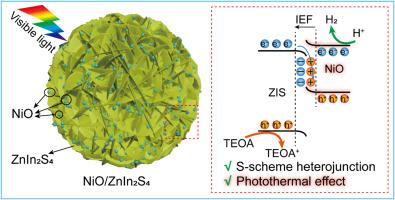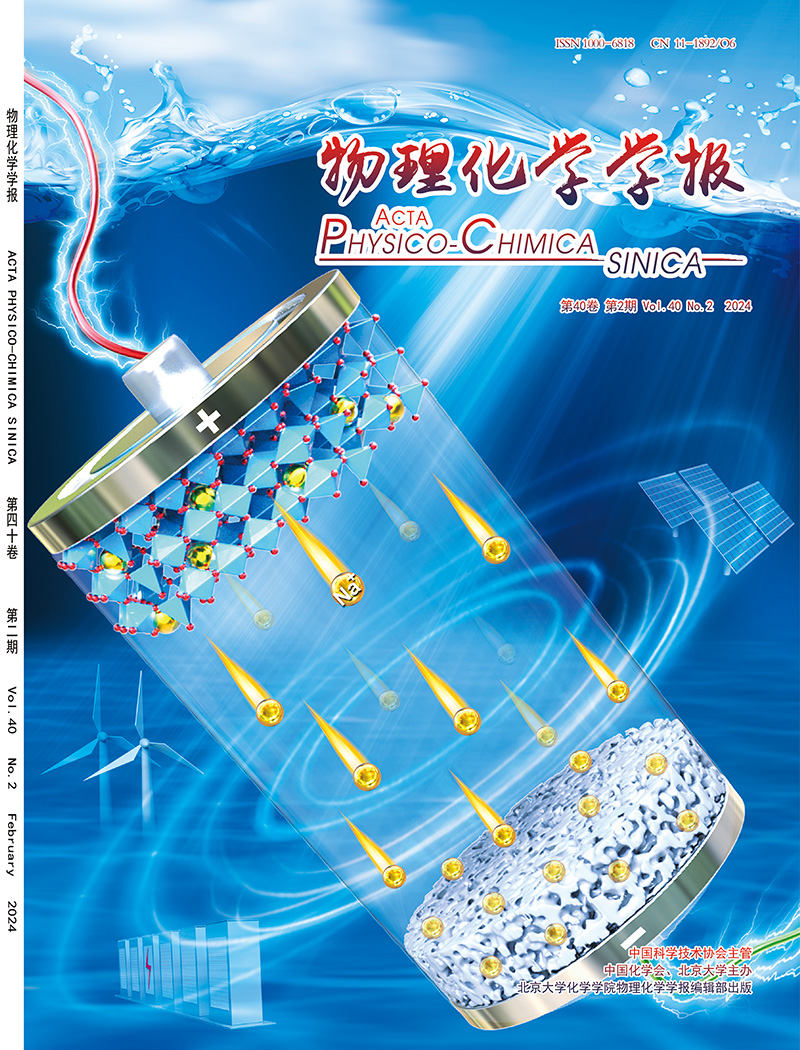Self-integrated black NiO clusters with ZnIn2S4 microspheres for photothermal-assisted hydrogen evolution by S-scheme electron transfer mechanism
IF 13.5
2区 化学
Q1 CHEMISTRY, PHYSICAL
引用次数: 0
Abstract
Hydrogen (H2) production technology utilizing solar energy is an essential strategy for questing carbon-neutral, but designing the optimal heterostructured photocatalysts is one of the great challenges. To date, the self-integration of highly-dispersed black NiO clusters with ZIS microspheres was successfully achieved during the solvothermal process. These constructed NiO/ZIS S-scheme heterostructured composites could provide more active for photocatalytic H2 evolution (PHE) under visible light. The optimal 2-NiO/ZIS showed the best PHE rate of 2474.0 μmol g−1 h−1, highest apparent quantum yield (AQY) value of 36.67 % and excellent structural stability. Furthermore, NiO/ZIS composites also exhibited the high PHE rates in natural seawater. The charge separation behaviors of the catalyst were systematically evaluated using advanced spectroscopic characterization techniques, specifically in-situ XPS, time-resolved photoluminescence (TRPL) tested in water and transient absorption spectroscopy (TAS). The experimental analysis and theoretical calculation results elucidated the S-scheme charge transfer mechanism for NiO/ZIS. The promoted PHE activity was ascribed to the combined effect between black NiO clusters and ZIS, which enhanced light harvesting ability, accelerated charge carrier transportation and separation, remained high redox ability, and improved surface reaction kinetics. This study offers the insights into constructing S-scheme heterostructured composites with photothermal effect.

带有ZnIn2S4微球的自集成黑色NiO团簇在S-scheme电子转移机制下光热辅助析氢
利用太阳能制氢技术是实现碳中和的必要策略,但设计最佳的异质结构光催化剂是一个巨大的挑战。迄今为止,在溶剂热过程中成功地实现了高度分散的黑色NiO团簇与ZIS微球的自集成。所构建的NiO/ZIS S-scheme异质结构复合材料在可见光下具有更强的光催化析氢活性。优化后的2-NiO/ZIS的PHE率为2474.0 μmol g−1 h−1,表观量子产率为36.67%,具有良好的结构稳定性。此外,NiO/ZIS复合材料在天然海水中也表现出较高的PHE率。采用先进的光谱表征技术,特别是原位XPS,水中时间分辨光致发光(TRPL)和瞬态吸收光谱(TAS),系统地评估了催化剂的电荷分离行为。实验分析和理论计算结果阐明了NiO/ZIS的S-scheme电荷转移机理。黑色NiO团簇与ZIS的共同作用提高了PHE活性,增强了光捕获能力,加速了载流子的迁移和分离,保持了较高的氧化还原能力,改善了表面反应动力学。本研究为构建具有光热效应的s型异质结构复合材料提供了新的思路。
本文章由计算机程序翻译,如有差异,请以英文原文为准。
求助全文
约1分钟内获得全文
求助全文

 求助内容:
求助内容: 应助结果提醒方式:
应助结果提醒方式:


